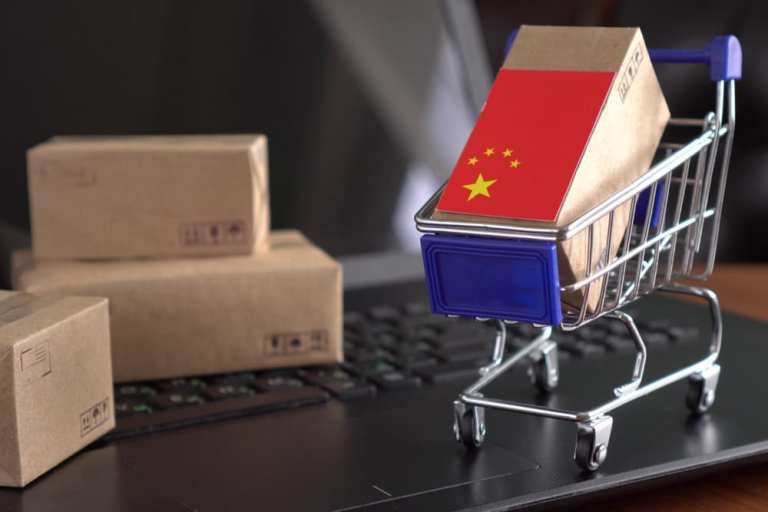
Markets are tumbling. Fears of a global recession are mounting.
Nowhere is the pain being felt more acutely than in China, where the coronavirus first took root and spread, where businesses and supply chains went dark, and where hundreds of millions of consumers, as well as businesses and their workers, stayed in their homes — into, and then through, the Lunar New Year, a key season for retail.
In an interview with Karen Webster, James Huang, Payoneer’s regional vice president of Greater China, said the seismic shifts underway signal a change in how global online consumers interact with Chinese eCommerce sellers.
As Huang said, it’s been a challenging time.
Coming into the first few weeks of 2020, “everybody was pretty optimistic going into the new year,” he said, “and the coronavirus was not completely on everybody’s radars but was something significant to be facing.”
He noted, too, that the dawn of coronavirus reports dovetailed with the onset of the traditional cold and flu season.
Inventory Buildup
Fast-forward a bit to where we are now — for business leaders, Huang said, it’s been a challenge to manage employees and budgets, much less to make accurate forecasts.
He noted, however, that across Payoneer’s portfolio of sellers in China, there has been at least one silver lining: inventory buildups in advance of the Chinese New Year Holiday to ensure ample supply in the midst of extended periods factory production would be suspended. This helped blunt some of the impact that would have otherwise affected sellers (and would have left those businesses vulnerable to supply chain disruptions).
“If you asked me this five years ago, my answer would’ve been different,” he told Webster. “The majority of our customers would have been what we call ‘drop shippers,’ which are operating on very little or even zero inventory.”
That model has transitioned to localized shipments and inventory, as Chinese eCommerce powerhouses like Anker have become known for their own brands and products, rather than only as resellers. This gave them more resilience at a time of supply chain disruption.
As Huang said, “Everyone’s coming back to work and everyone’s monitoring whether there’ll be a second outbreak because the transportation systems have high degrees of human contact and crowds. So, everyone’s definitely tracking these numbers for the next two weeks.”
Through the coronavirus crisis, he said, sellers have proven to be resilient, and key indicators — including sales volume numbers seen across the Payoneer platform — have been better than expected, as they have outsourced supplies from additional countries or adjusted pricing. They have also made arrangements to restock so that sales velocity can pick up once current pressures lift, and they are working with firms like Payoneer to obtain working capital.
The ability to pivot away from risky markets toward southeast Asia and Australia comes with plugging into ecosystems across platforms such as Payoneer’s, said Huang. Payoneer has also been working with marketplaces like Alibaba to help merchants to be highly responsive with bringing supply back onto the market, along with helping find alternative logistics solutions.
From Payoneer’s internal data, which taps into the trade of goods and services around the world, come signals that there may be both headwind and tailwind in the wake of the coronavirus.
“There’s a lot of talk about reduction in consumption power,” Huang said. “But at the same time, this might be a once-in-a-lifetime disruption — we’re talking about a prominent change in consumer preferences” tied to a permanent shift toward eCommerce, where online retail is now about 14 percent of total retail spend in China but is undoubtedly poised to grow.
That shift — well past those mid-teen percentage points — will come as hundreds of millions of people, sticking close to home by necessity, have opted for buy buttons over walking into brick-and-mortar stores.
The initial beneficiaries will be the dominant players in eCommerce, social networks and gaming companies that have created ecosystems that connect individuals, services providers and merchants, such as Zoom, Netflix, Alibaba and others. Payoneer, for its own part, said that in the third quarter of 2019, year-over-year eCommerce sales volume experienced by Chinese merchants was up 33 percent, without the same increase in the number of sellers. That indicates that existing sellers, of course, are seeing more sales volume.
Against that backdrop, Huang noted, Payoneer is investing in bringing new sellers onto its platform and said there has been increased interest in those sellers increasing their overseas presence — and the same works in reverse for companies selling into China (and elsewhere). The company said in October of last year that it had introduced a new cross-border payment service focused on small- to medium-sized businesses (SMBs), with the ability for U.S. companies of all sizes to send payments to vendors and contractors across borders.
And when demand rebounds, added Huang, it’s crucial for online marketplaces to be ready.
“Our community is growing, with different types of firms coming on board,” he told Webster.